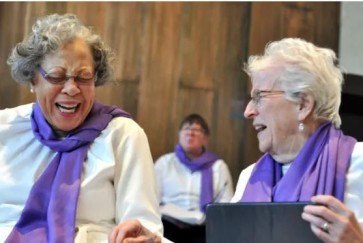Have you ever used a mnemonic device with a rhyme or alliteration — like “i before e, except after c” — to help remember something, and wondered why it worked so well?
New research led by Northwestern University Ph.D. student Matias Fernandez-Duque and Viorica Marian, the Ralph and Jean Sundin Professor of Communication Sciences and Disorders, sheds light on why overlapping sounds stand out in our memories.
According to the study, published August 16 in the journal Science Advances, people remember words better if they overlap phonologically with a target word (meaning they have similar sounds, but different meanings). If the person is bilingual, memory is improved even if the words overlap in different languages.
“The experiences that we have with language shape how we process and remember the world,” Fernandez-Duque said. “We found that objects that sound similar are remembered better.”
For example, the word “candy” is similar to the word “candle” in English, but also “candado,” which means “padlock” in Spanish.
In the study, the research team presented people with grids featuring images of four objects. An audio recording then prompted them in English to click on one of the four, which was easy enough — most people took just a moment to do it.
But there was a catch: Some of the grids also featured an object that sounded similar in either English or Spanish. Meanwhile, peoples' eye movements during the experiment were recorded. The researchers found that for milliseconds before clicking, many people glanced at the square containing the similar-sounding object.
Rather than windows to the soul, researchers suggest our eyes are windows into the mind.
If someone who spoke English was asked to find a piece of candy in a grid that also contained a candle, for example, they might dwell on the candle momentarily, whereas someone who spoke both English and Spanish might have looked at the padlock (“candado”), despite having been prompted in English to find the candy.
Glancing at other objects, in general, didn’t cause people to take longer on the test. But it did improve their memories for the non-target objects that they looked at.
When asked later on about which objects they had previously seen, more people remembered the words that had sounded similar to the target word than other objects which had been in the grids, but didn’t overlap phonologically.
Among the Spanish speakers, Spanish proficiency made a difference. Those who had a higher level of proficiency were more likely to see their memories of similar-sounding objects improve. This could be because the Spanish names for the objects depicted in the grid leapt to mind more quickly for them despite the English prompts, according to the study.
The results could have further implications for our understanding of the relationship between language, memory and cognition, according to the authors.
Potential applications that could be studied in the future include whether grouping similar-sounding items together might help aging people who are struggling with memory to remember things better, or improves learning in educational settings for people who are learning a new language.
It’s often said “the eyes are the window to the soul” but in this case researchers suggest they are windows into the mind.
Marian’s lab in the School of Communication, the Bilingualism and Psycholinguistics Research Laboratory, has also studied the implications of bilingualism from multiple other angles, including learning, sensory perception, audio-visual integration, decision-making and more. Her new book, The Power of Language, takes a comprehensive look at how language shapes us.
In addition to Fernandez-Duque and Marian, Sayuri Hayakawa — a former postdoctoral researcher at Northwestern who is now a faculty member at Oklahoma State University — also served as a coauthor of the study.


